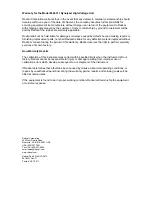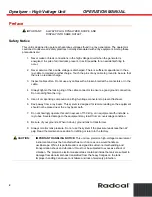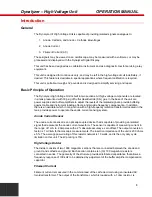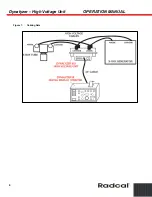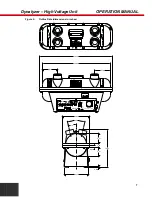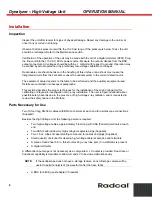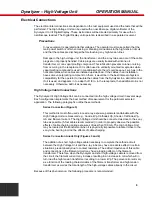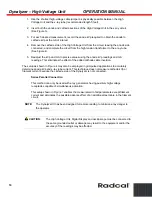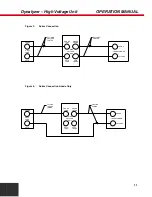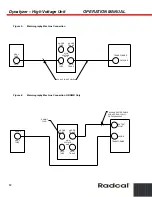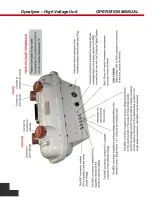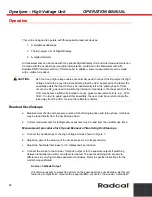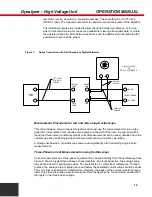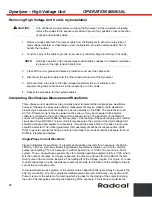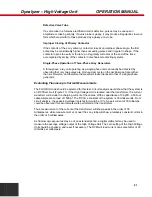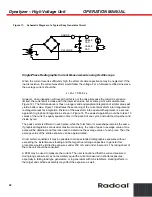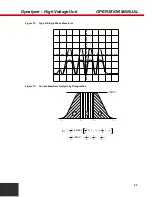
Dynalyzer – High Voltage Unit
OPERATION MANUAL
9
Electrical Connections
The electrical interconnections are dependent on the test equipment used and the tests that will be
performed. The High Voltage Unit can be used with an oscilloscope, digital voltmeter of the
Dynalyzer II or III Digital Display. These instructions will be directed primarily for use with an
oscilloscope readout. The Digital Display unit operation is described in a separate document.
Precautions
X-ray equipment is operated at lethal voltages. The operator must make certain that the
main power switch is off when making or breaking connections in the high-tension circuit
and that the cables are discharged before touching any high-tension lines.
Damage to the high voltage unit, the transformer, and the x-ray tube can occur if the cable
plugs are not properly handled. Cable plugs are usually treated with silicone oil,
transformer oil, or a vaporproofing compound. This lubrication prevents corona or arcing
from occurring in the receptacle. Oil is often used in vertically mounted receptacles while
vaporproofing compound is used in conditions where the oil could seep out, such as in the
horizontal plans when cables are installed upside down. If the cables in an installation
have some vaporproofing compound on them, it would be in the best interest of system
compatibility for the operator to insulate the cables from the Dynalyzer in a similar manner.
If oil is used, and appears in to a depth of 1/8 in. in the receptacle, then additional oil is not
necessary. Otherwise, add oil as necessary.
High Voltage Cable Connections
The Dynalyzer III High Voltage Unit can be connected into the high voltage circuit in several ways.
Each configuration implements the best method of measurement for the particular selected
application. The following paragraphs outline these methods.
Series Connection (Figure 3)
This method is most often used since all x-ray exposure parameters attainable with the
High Voltage Unit are measured e.g., Anode kVp, Cathode kVp, Anode + Cathode kVp,
mA and filament current. The High Voltage Unit should be connected as close to the x-ray
tube as possible (5-foot cables recommended) in order to properly observe the possible
effects of cable charging during exposures of less than 100 mA. The High Voltage Unit
may be located at the transformer when it is physically impossible to locate it close to the
x-ray tube, bearing in mind the effects of cable charging.
Series Connection Anode Only (Figures 3 and 4)
The addition of a short high voltage cable necessary to complete the cathode circuit
between the High Voltage Unit and the x-ray tube may have an adverse effect in certain
situations, predominantly due to contact resistance. The added impedance of this cable
and connections in the filament circuit may have a loading affect on the filament
transformer. Therefore, when the Dynalyzer and short high-voltage cable is removed from
the circuit, the filament current may increase resulting in an increase in mA which will in
turn load the high tension transformer resulting in a lower kVp. The percent error will vary
as a function of the loading characteristics of the filament transformer and high tension
transformer as well as the total length of the high-voltage cables already in the circuit.
Because of this phenomenon, the following procedure is recommended:


